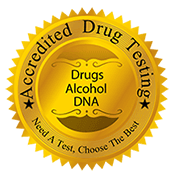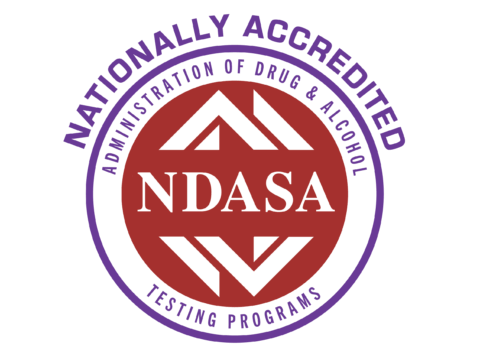Understanding DOT Requirements for Drug and Alcohol Program Policies & Procedures
The U.S. Department of Transportation (DOT) has strict regulations in place to ensure transportation safety by requiring employers in safety-sensitive industries to implement comprehensive drug and alcohol testing programs. These regulations, primarily outlined in 49 CFR Part 40, mandate specific policies and procedures that employers must follow. This page provides an overview of key DOT requirements for your drug and alcohol program.
Mandatory Policy Components
Your DOT drug and alcohol program policy must clearly outline several critical required aspects. Failure to include these can lead to non-compliance and potential penalties.
- Who is covered by the policy: Identify all employees who perform safety-sensitive functions and are subject to DOT testing regulations. This includes drivers, pilots, mechanics, dispatchers, and others, depending on the specific transportation mode (FMCSA, FAA, FRA, FTA, USCG, PHMSA).
- Prohibited conduct: Explicitly state the prohibited use, possession, manufacture, distribution, dispensing, or being under the influence of alcohol or controlled substances while on duty, during pre-duty time, or subject to duty.
- Types of testing: Detail the different types of DOT-mandated drug and alcohol tests that will be conducted:
- Pre-employment testing: Required before a safety-sensitive employee performs safety-sensitive functions for the first time.
- Reasonable suspicion testing: Conducted when there is reasonable suspicion to believe an employee has violated the prohibited conduct standards.
- Post-accident testing: Required after certain accident criteria as defined by DOT regulations.
- Random testing: Unannounced testing conducted based on a scientifically valid random selection process.
- Follow-up testing: Required for employees who have violated DOT drug and alcohol regulations and have returned to safety-sensitive duties.
- Testing procedures: Describe the procedures that will be followed during drug and alcohol testing, adhering strictly to 49 CFR Part 40 guidelines. This includes specimen collection, chain of custody, laboratory analysis, and Medical Review Officer (MRO) review.
- Consequences for violations: Clearly state the consequences for employees who test positive for drugs or alcohol or who refuse to submit to testing. This must include immediate removal from safety-sensitive duties and referral to a Substance Abuse Professional (SAP).
- Employee assistance program (EAP) information: Provide information about any available EAP or resources for employees struggling with substance abuse.
- Confidentiality: Outline how employee drug and alcohol testing information will be kept confidential, in accordance with privacy regulations.
- Employee responsibilities: Clearly state the responsibilities of employees under the DOT drug and alcohol program.
- Employer responsibilities: Detail the responsibilities of the employer in implementing and managing the DOT drug and alcohol program.
- Refusal to test: Clearly define what constitutes a refusal to test and the consequences of a refusal, which are the same as a positive test result.
Adherence to 49 CFR Part 40
It is crucial that your policies and procedures strictly adhere to the regulations outlined in 49 CFR Part 40 - "Procedures for Transportation Workplace Drug and Alcohol Testing Programs." This regulation details every aspect of the testing process, from specimen collection to the MRO's responsibilities. Staying updated with any amendments to Part 40 is essential for compliance.
Importance of a Designated Employer Representative (DER)
Your company must designate a Designated Employer Representative (DER). This individual is responsible for overseeing the implementation and administration of your DOT drug and alcohol program. The DER must be knowledgeable about DOT regulations and have the authority to take the necessary actions to ensure compliance.
Recordkeeping Requirements
DOT regulations require employers to maintain detailed records related to their drug and alcohol testing program. These records must be kept secure and readily available for DOT audits. Examples of required records include:
- Drug and alcohol testing results
- Calibration and maintenance records for alcohol testing devices
- SAP referrals and follow-up testing plans
- Records of employee training and education
- Statistical summaries of testing data
Training and Education
DOT regulations mandate specific training requirements for both supervisors and employees:
- Supervisor training: Supervisors who make reasonable suspicion determinations must receive training on the physical, behavioral, and performance indicators of probable drug use and alcohol misuse.
- Employee education: All safety-sensitive employees must receive educational materials outlining the company's drug and alcohol policy, DOT regulations, and the consequences of violations.
Consequences of Non-Compliance
Failure to comply with DOT drug and alcohol testing regulations can result in significant penalties, including:
- Fines and civil penalties
- Operational restrictions
- Out-of-service orders for drivers or equipment
- Negative safety ratings
- Legal liabilities
Staying Compliant
Maintaining compliance with DOT drug and alcohol testing regulations is an ongoing process. Employers should:
- Regularly review and update their policies and procedures to reflect any changes in DOT regulations.
- Ensure that all service agents (e.g., testing facilities, MROs, SAPs) are qualified and compliant with Part 40.
- Conduct regular audits of their program to identify and address any potential areas of non-compliance.
- Provide ongoing training and education to supervisors and employees.
Disclaimer: This webpage provides a general overview of DOT requirements for drug and alcohol program policies and procedures. It is not intended to be a substitute for legal advice or the official DOT regulations found in 49 CFR Part 40 and the specific regulations of the relevant operating administration (e.g., FMCSA, FAA, FRA, FTA, USCG, PHMSA). Employers should consult with legal counsel and refer to the official DOT regulations for complete and up-to-date information.

